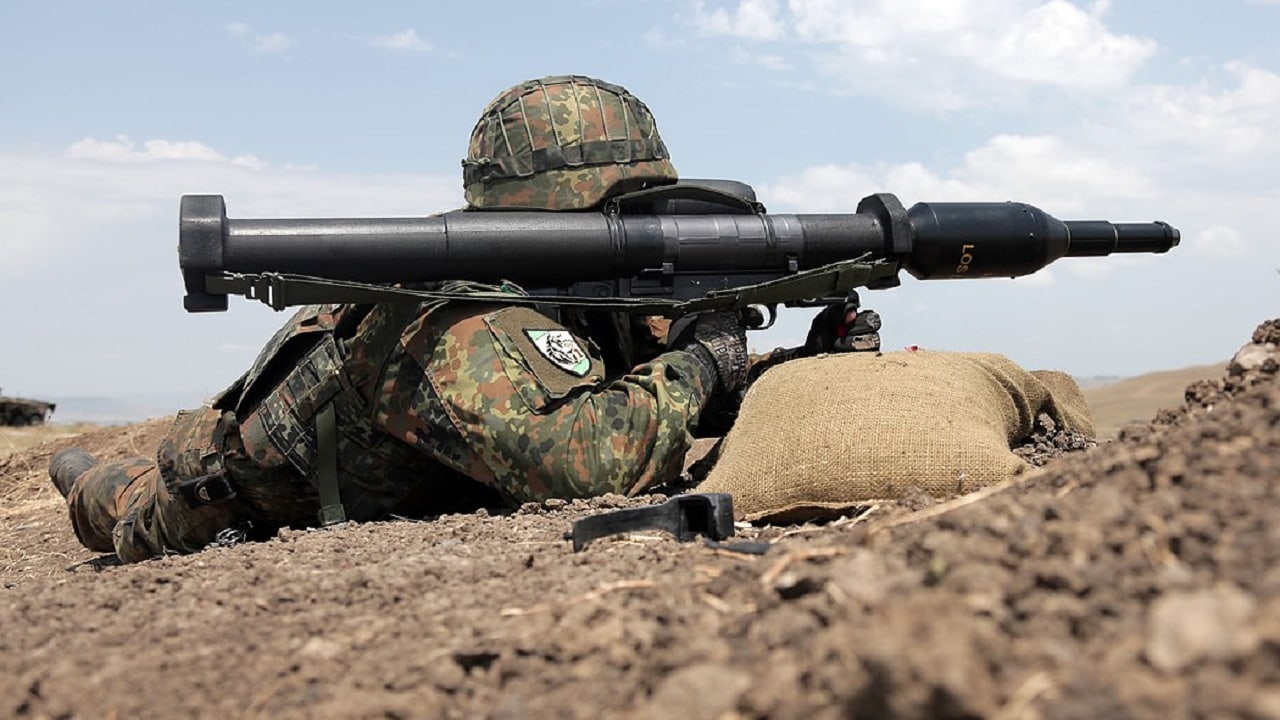During the Second World War, the German military developed the first Panzerfaust (“armored fist”) as a matter of necessity. Nazi Germany had needed an inexpensive anti-tank weapon to counter enemy tanks – notably those employed by the Soviet Red Army. The single-shot, recoilless weapon, which could be operated by a single soldier (or even quickly trained civilians who made up the Volkssturm), became the most widely used anti-tank weapon of the war, with more than eight million produced between late 1942 and May 1945.
It was essentially a recoilless rifle that could launch a small but powerful shape charge at distances up to 200 yards, and if it scored a direct hit, it was deadly. The warhead didn’t just explode; it could send a jet of hot metal into the tank’s cabin – which could kill the crew or even set off the fuel and ammo.
Fast forward to 2022 and the Panzerfaust is once again destroying Russian tanks.
However, it isn’t the same one-shot wonder that was carried by the Wehrmacht back in World War II. The modern Panzerfaust 3 was developed during the latter stages of the Cold War to provide the West German Bundeswehr with a weapon that could be effective against contemporary Soviet armor. It first entered service in 1987 and was officially adopted by the reunified German military in 1992.
The Panzerfaust 3 consists of a disposable canister with a 110mm warhead and reusable firing and sighting device. The booster fuel in the round is ignited by a bolt via a spring mechanism. Once ejected from the launcher, the projectile coasts to a safe distance, about 16.5 feet, before the rocket motor is ignited, boosting it to maximum speed. Gunners carry at least two rounds, while an assistant grenadier typically carries another three rounds.
Just as the original World War II-era Panzerfaust was steadily upgraded and improved and subsequently received a larger warhead, the Panzerfaust 3 has also been updated to keep up with improvements in tank design. The Panzerfaust 3-T employs a dual hollow-charge tandem warhead, with a spike on the front of the warhead that can set off reactive armor.
With a muzzle velocity of 499 feet per second, the Panzerfaust’s 3 warhead has a maximum effective range of 1,968.5 feet against a moving target. The minimum effective range – without the debris of an exploding target endangering the user – is 65.6 feet.
The Panzerfaust 3 has been seen as a cost-effective solution to destroying Russian tanks. Each of the current units is reported to cost just above $11,000 – but that includes a computerized sight. The standard anti-tank round is roughly $300, while a Bunkerfaust (“bunker fist”) round for use against static enemy positions costs about $200. That’s certainly a bargain when used against Russian T-72 main battle tanks (MBTs), which cost around $500,000 each to produce, or the T-90M, which has a price tag of approximately $4.5 million each.
https://www.youtube.com/watch?v=nmMTwJB3BfU
Now a Senior Editor for 1945, Peter Suciu is a Michigan-based writer who has contributed to more than four dozen magazines, newspapers and websites. He regularly writes about military hardware, and is the author of several books on military headgear including A Gallery of Military Headdress, which is available on Amazon.com. Peter is also a Contributing Writer for Forbes.

